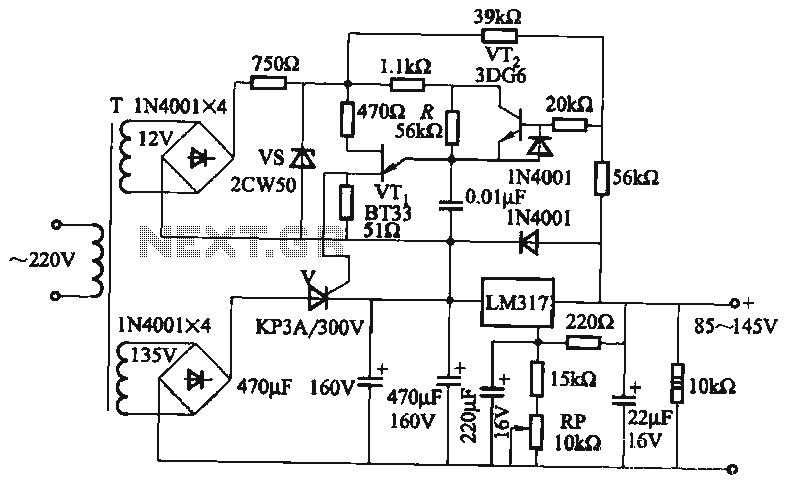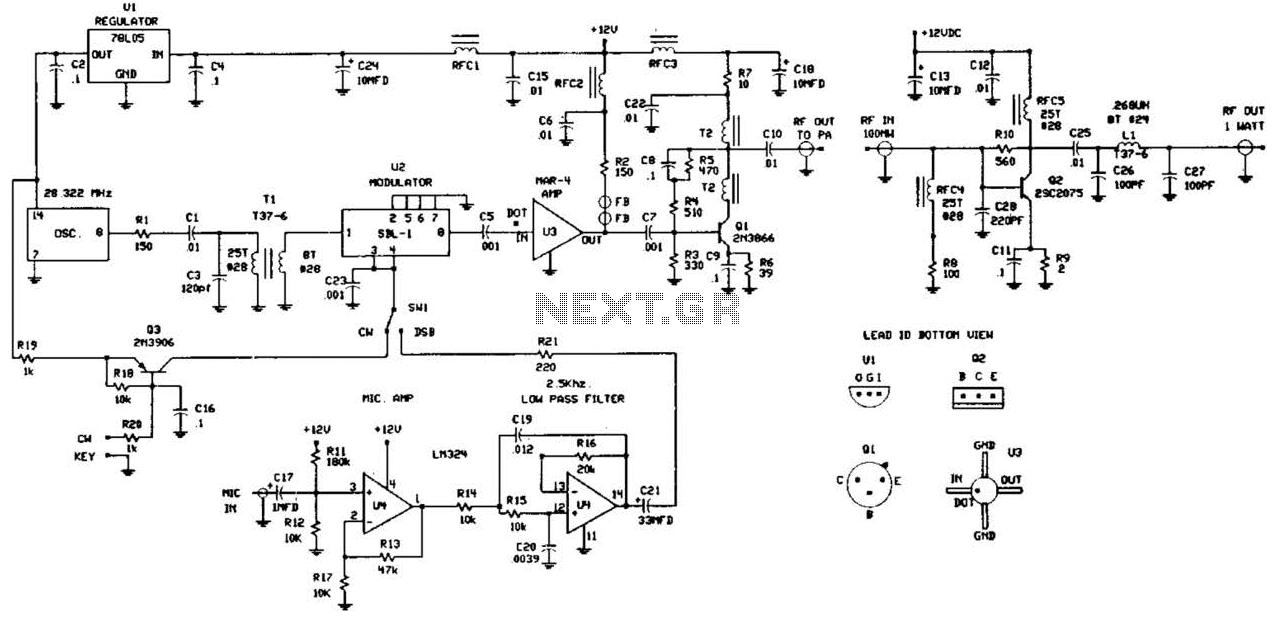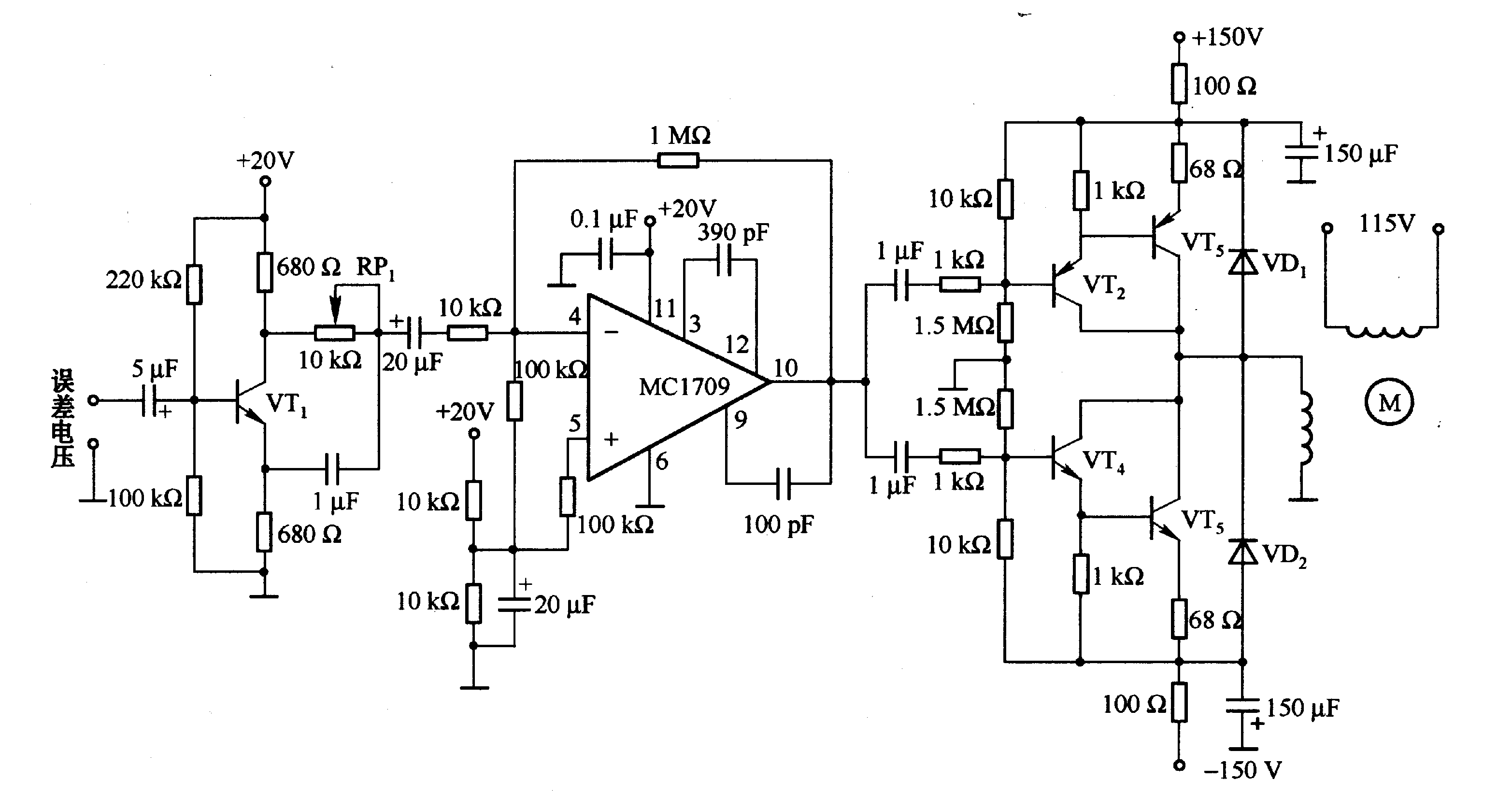
Output 85 to 145V adjustable power supply circuit

It utilizes a three-terminal adjustable voltage regulator power supply and incorporates a thyristor for presetting the LM317. The voltage can be adjusted between 85V and 145V, with an output current limited to a maximum of 1A. An adjustment potentiometer (RP) is used to modify the output voltage.
The circuit described employs the LM317 voltage regulator, which is a versatile component capable of delivering a stable output voltage that can be adjusted according to the requirements of the application. The LM317 operates by maintaining a constant voltage across its output terminals, which can be set to a desired level using external resistors or a potentiometer.
In this configuration, the circuit is designed to provide an adjustable output voltage ranging from 85V to 145V. This is achieved by connecting the adjustment potentiometer (RP) in a manner that allows for fine-tuning of the output voltage. The potentiometer acts as a variable resistor, altering the feedback voltage to the LM317, thus changing the output voltage accordingly.
The inclusion of a thyristor in the circuit serves as a means of controlling the power supply, allowing for presetting of the LM317. This component can handle high voltages and is suitable for applications where the voltage needs to be controlled or switched on and off rapidly. The thyristor's ability to withstand high current and voltage levels makes it an ideal choice for this type of power supply circuit.
The output current of the circuit is limited to a maximum of 1A, which is a typical specification for the LM317. This ensures safe operation and prevents overheating or damage to the regulator and connected components. Proper heat dissipation techniques, such as heatsinking, should be employed to maintain the reliability of the circuit during operation.
Overall, this power supply circuit is suitable for various applications requiring adjustable voltage levels, including testing and powering electronic devices that operate within the specified voltage and current ranges. Careful consideration of component ratings and thermal management will enhance the performance and longevity of the circuit.It uses three-terminal adjustable voltage regulator power supply functions and suspension Electric thyristor presetting the LM317 voltage technology to 85 ~ 145V adjustable output voltage, output current is not greater than 1A. Adjustment potentiometer RP, can change the output voltage.
The circuit described employs the LM317 voltage regulator, which is a versatile component capable of delivering a stable output voltage that can be adjusted according to the requirements of the application. The LM317 operates by maintaining a constant voltage across its output terminals, which can be set to a desired level using external resistors or a potentiometer.
In this configuration, the circuit is designed to provide an adjustable output voltage ranging from 85V to 145V. This is achieved by connecting the adjustment potentiometer (RP) in a manner that allows for fine-tuning of the output voltage. The potentiometer acts as a variable resistor, altering the feedback voltage to the LM317, thus changing the output voltage accordingly.
The inclusion of a thyristor in the circuit serves as a means of controlling the power supply, allowing for presetting of the LM317. This component can handle high voltages and is suitable for applications where the voltage needs to be controlled or switched on and off rapidly. The thyristor's ability to withstand high current and voltage levels makes it an ideal choice for this type of power supply circuit.
The output current of the circuit is limited to a maximum of 1A, which is a typical specification for the LM317. This ensures safe operation and prevents overheating or damage to the regulator and connected components. Proper heat dissipation techniques, such as heatsinking, should be employed to maintain the reliability of the circuit during operation.
Overall, this power supply circuit is suitable for various applications requiring adjustable voltage levels, including testing and powering electronic devices that operate within the specified voltage and current ranges. Careful consideration of component ratings and thermal management will enhance the performance and longevity of the circuit.It uses three-terminal adjustable voltage regulator power supply functions and suspension Electric thyristor presetting the LM317 voltage technology to 85 ~ 145V adjustable output voltage, output current is not greater than 1A. Adjustment potentiometer RP, can change the output voltage.




